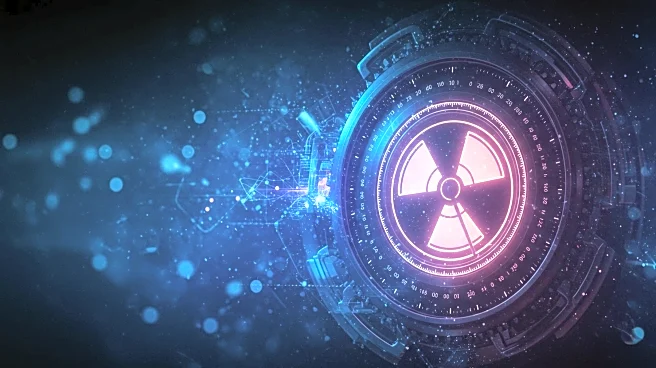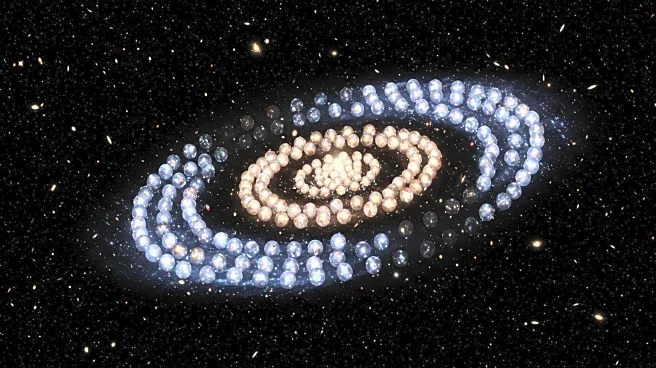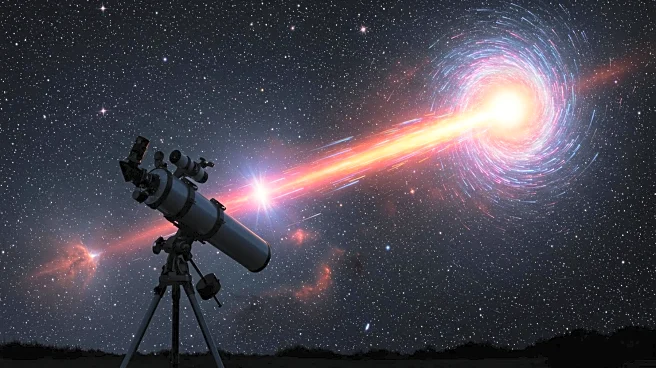What is the story about?
What's Happening?
Scientists are advancing the development of a nuclear clock using thorium-229, an isotope once considered a byproduct of the U.S. nuclear program. This clock, which utilizes low-energy transitions in the thorium-229 nucleus, could potentially detect dark matter with a resolution 100,000 times better than current atomic clocks. Unlike atomic clocks, nuclear clocks are less susceptible to electrical interference, making them ideal for detecting the subtle perturbations caused by dark matter. Recent breakthroughs have been made in labs worldwide, culminating in a paper published in Nature, which reported a thorium-229 transition with unprecedented accuracy.
Why It's Important?
The development of a thorium-229 nuclear clock represents a significant leap in the search for dark matter, a mysterious substance that constitutes a large portion of the universe's mass. By providing a more precise method of detection, nuclear clocks could unveil new atomic realms and contribute to our understanding of fundamental physics. This advancement could lead to breakthroughs in various scientific fields, including particle physics and cosmology, potentially impacting technology and industry by enhancing precision in timekeeping and measurement.
What's Next?
Further research and development are needed to refine the nuclear clock technology and increase its precision. Scientists aim to explore the potential of thorium-229 in detecting dark matter and other quantum phenomena. Continued collaboration among international research teams will be crucial in overcoming technical challenges and advancing the application of nuclear clocks in scientific exploration.
Beyond the Headlines
The use of thorium-229, once deemed a nuclear byproduct, highlights the potential of repurposing materials for innovative scientific applications. This development underscores the importance of interdisciplinary research in uncovering new possibilities within established scientific paradigms.
AI Generated Content
Do you find this article useful?











